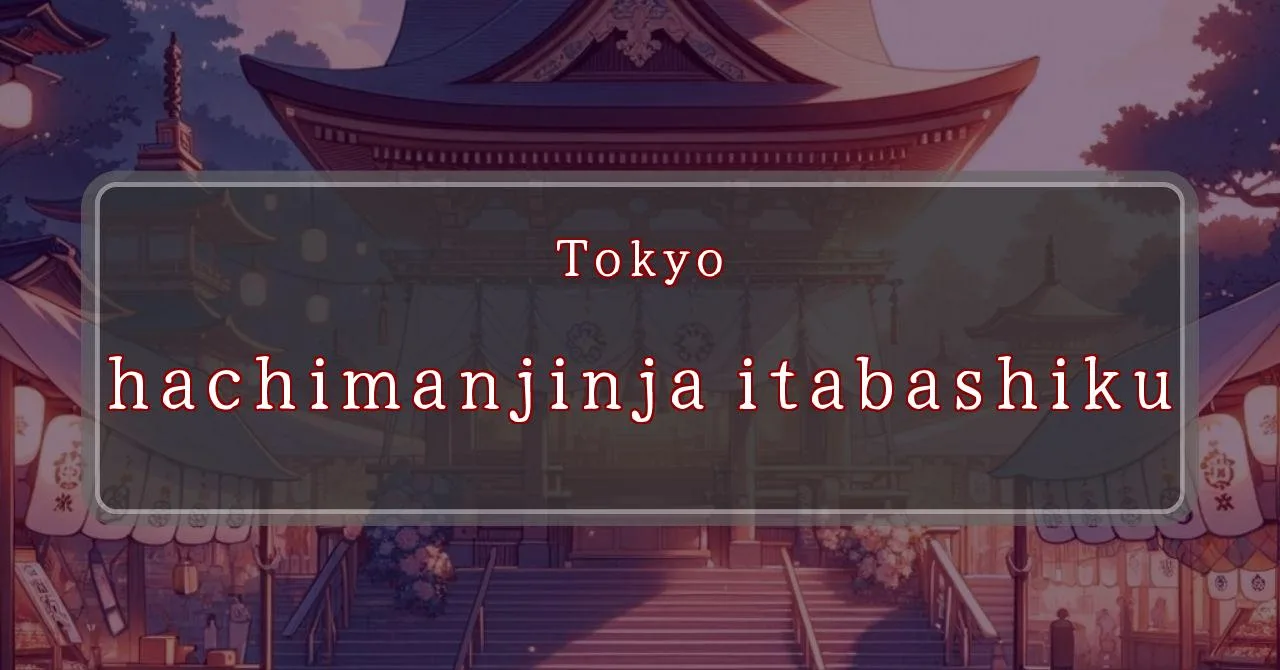Enchanting Shrine Festival in Tokyo: A Journey Through History and Tradition
Basic Information
Discover the Enchanting 2024 Hachiman Shrine Festival in Itabashi, Tokyo.
- Address: 5-26-15 Takinogawa, Kita Ward, Tokyo 114-0023
- Phone Number: 03-3916-2890
- Access: 7-minute walk from Nishi-Sugamo Station on the Toei Mita Line or 9-minute walk from Itabashi Station on the JR Saikyo Line
- Festival Days: Second Saturday and Sunday of September (September 14th and 15th in 2024)
Main Events and Attractions of the Festival
Immerse yourself in the vibrant festivities of the 2024 Hachiman Shrine Festival in Itabashi, Tokyo.
Mikoshi Procession
Witness the grandeur of the Mikoshi Procession, a captivating spectacle that takes place on both days of the festival. Elaborately decorated portable shrines, known as mikoshi, are carried through the streets by teams of devotees, accompanied by lively music and enthusiastic cheers. This procession is a vibrant display of community spirit and religious devotion.
Shishimai Dance
Be mesmerized by the enchanting Shishimai Dance, a traditional lion dance performed by skilled dancers adorned in colorful lion costumes. The dance is believed to bring good luck and ward off evil spirits, making it a highlight of the festival. Watch as the lion gracefully moves to the rhythm of traditional music, captivating audiences of all ages.
Yatai Village
Indulge in a culinary adventure at the Yatai Village, a bustling street lined with food stalls offering a delectable array of Japanese delicacies. From savory grilled meats and fresh seafood to sweet treats and refreshing beverages, there’s something to satisfy every palate. Immerse yourself in the lively atmosphere as you savor the flavors of Japan.
Stage Performances
Experience the vibrant energy of the stage performances, showcasing a diverse range of traditional and contemporary arts. From traditional music and dance to modern pop and rock, there’s something for everyone to enjoy. These performances add an extra layer of entertainment to the festival, making it a truly immersive experience.
Blessings and Deities
Discover the divine blessings and deities revered at the Hachiman Shrine Festival.
- Deities: The Hachiman Shrine is dedicated to Hachiman, the god of war and guardian deity of warriors. Hachiman is also revered as a protector of the nation and a bringer of good fortune.
- Blessings: Devotees pray for various blessings at the festival, including success in battle, victory over enemies, protection from harm, and prosperity in business and agriculture.
Origin and History
Unravel the rich history and origins of the Hachiman Shrine Festival.
- Origins: The exact origins of the festival are unknown, but it is believed to have begun during the Heian period (794-1185) as a way to pray for victory in battle.
- History: Over the centuries, the festival has evolved and grown in popularity, becoming a major annual event in the Itabashi district of Tokyo.
Tips and Notes for Visitors
Ensure a smooth and enjoyable experience at the Hachiman Shrine Festival with these helpful tips.
- Crowds: The festival attracts large crowds, so be prepared for congestion and long lines. Arrive early to avoid the worst of the crowds.
- Weather: The festival takes place in September, which can be hot and humid in Tokyo. Dress accordingly and stay hydrated.
- Food and Drink: A variety of food and drink stalls are available at the festival. Try some of the local specialties, such as takoyaki (octopus balls) and yakisoba (fried noodles).
- Respectful Behavior: Remember to be respectful of the religious significance of the festival. Avoid loud noises and disruptive behavior.
Parking Information
Plan your transportation to the Hachiman Shrine Festival with this parking information.
- Limited Parking: There is limited parking available near the shrine. Consider using public transportation or parking at a nearby train station and walking to the festival.
- Public Transportation: The festival is easily accessible by public transportation. Take the Toei Mita Line to Nishi-Sugamo Station or the JR Saikyo Line to Itabashi Station. From there, it is a short walk to the shrine.
Popular Stalls and Food Carts in Recent Years
| Type of Stall | Description |
|---|---|
| Takoyaki | A staple at Japanese festivals. Characterized by a crispy outside and a creamy inside. |
| Jaga Butter | A simple yet popular snack of hot potatoes lavishly topped with melted butter. |
| Baby Castella | Small castella cakes, sweet and fluffy treats enjoyed by children and adults alike. |
| Grilled Ayu with Salt | Fresh ayu fish grilled whole with salt, a savory taste of Japanese summer. |
| Shaapin | A unique gourmet item influenced by foreign cuisine, with a chewy skin wrapping the filling. |
| Okonomiyaki | A Japanese grilled dish where you often choose your own ingredients for a personalized flavor. |
| Cotton Candy | A fluffy, sweet snack that’s extremely popular with children. |
| Chocolate Banana | A banana coated in chocolate, a fun and visually appealing dessert. |
| Kushiyaki | Various types of ingredients skewered and grilled, an easy-to-enjoy snack. |
| Yakisoba | Fried noodles mixed with a special sauce, a fast food favorite in Japan. |



